Yahya Petra of Kelantan
| Yahya Petra | |||||
|---|---|---|---|---|---|
|
6th Yang di-Pertuan Agong of Malaysia Al-Sultan of Kelantan | |||||
| Yang di-Pertuan Agong of Malaysia | |||||
| Reign | 21 September 1975 – 29 March 1979 | ||||
| Installation | 28 February 1976 | ||||
| Predecessor | Abdul Halim of Kedah | ||||
| Successor | Ahmad Shah of Pahang | ||||
| Sultan of Kelantan | |||||
| Reign | 10 July 1960 – 29 March 1979 | ||||
| Coronation | 17 July 1961 | ||||
| Predecessor | Ibrahim IV of Kelantan | ||||
| Successor | Ismail Petra of Kelantan | ||||
| Born |
10 December 1917 Kota Bharu, Kelantan, Unfederated Malay States, British Malaya | ||||
| Died |
29 March 1979 (aged 61) Istana Negara, Kuala Lumpur, Malaysia | ||||
| Burial |
30 March 1979 Kota Bharu, Kelantan, Malaysia | ||||
| Spouse | Tengku Zainab | ||||
| Issue | Ismail Petra of Kelantan | ||||
| |||||
| Father | Ibrahim IV of Kelantan | ||||
| Mother | Che Embong binti Daud | ||||
| Religion | Sunni Islam | ||||
Sultan Yahya Petra Ibni Al-Mahum Sultan Ibrahim, GCMG, (10 December 1917 – 29 March 1979) was the sixth Yang di-Pertuan Agong (King) of Malaysia from 21 September 1975 to his death, and twelfth (by some reckoning tenth) Sultan of modern Kelantan (1960–1979).
Early career
He was born Tengku Yahya Petra at Istana Balai Besar in Kota Bharu. He was the second son of Sultan Ibrahim ibni Almarhum Sultan Muhammad IV (b. 1897; reigned 1944–1960) but the first by his commoner wife, Embong binti Daud (1899–1971), who was later promoted to the style Che Ampuan Besar by her son.[1]
The young Tengku Yahya Petra was raised by his childless uncle, Tengku Ismail, later Sultan Ismail ibni Almarhum Sultan Muhammad IV. He was sent to the Francis Light School in Penang before continuing his studies in England. His uncle, Sultan Ismail, appointed him Tengku Temenggong on 21 July 1939. He was later promoted to Tengku Bendahara on 6 February 1945 by his father, then Sultan Ibrahim. He served in various Kelantan civil service posts from 1941 to 1948.[2]
The Kelantan Succession Dispute
Tengku Indra Petra was the eldest son of Sultan Ibrahim and elder brother of Tengku Yahya Petra. After Sultan Ibrahim succeeded his childless brother Sultan Ismail, Tengku Indra Petra had been appointed heir apparent with the title of Raja Muda on 25 October 1944. However, due to conflict with his father, he was dismissed from the post and removed from the line of succession by his father's decree on 1 February 1948. On the same day, Tengku Yahya Petra replaced his brother as heir apparent with the new title of Tengku Mahkota.
Tengku Indra Petra became a politician and was elected a Member of Parliament (MP) in the first federal legislative election of 1955. Tengku Indra's descendants have since disputed their family's exclusion from the line succession of the Kelantan throne.[3]
Tengku Indra Petra did not preside over the installation of Sultan Yahya Petra's successor, Sultan Ismail Petra, It was Tengku Panglima Raja Tengku Ahmad who presided over both installations of Sultan Yahya Petra and Sultan Ismail Petra. Tengku Panglima Raja is the father of the former Sultanah of Johor, Sultanah Zanariah binti Tengku Ahmad.
Accession
Sultan Yahya Petra (as he became) succeeded his father a day after the latter's death on 9 July 1960. He was crowned on 17 July 1961 at Istana Balai Besar in Kota Bharu.
Election as Deputy Yang di-Pertuan Agong
Sultan Yahya Petra served as Deputy Yang di-Pertuan Agong, the federal deputy king between 21 September 1970 until 20 September 1975.
Election as Yang di-Pertuan Agong
During the election of the sixth Yang di-Pertuan Agong (the federal king), the most senior rulers Sultan Abu Bakar of Pahang and Sultan Ismail of Johor both declined to be considered. Sultan Yahya Petra also declined nomination at first due to having suffered a serious stroke, but changed his mind and was duly elected.[4] His term began from 21 September 1975.
Events During Kingship
Malaysia's second prime minister Tun Abdul Razak died on 14 January 1976 less than four months into Sultan Yahya Petra's reign as Yang di-Pertuan Agong.
In 1977 a state of emergency was declared in his state following a political crisis and violence.
Death and Funeral
Sultan Yahya Petra died in his sleep of an apparent heart attack at Istana Negara on 29 March 1979. His coffin lay in state at Istana Negara for a day and was then taken by plane to Kota Bharu where it was buried at the Langgar Royal Mausoleum.[5]
Family life
He was married to Tengku Zainab binti Tengku Sri Utama Raja Tengku Muhammad Petra (1917–1993), who was styled Raja Perempuan Zainab II (her stepmother-in-law was Raja Perempuan Zainab I, consort of Sultan Ibrahim) and Raja Permaisuri Agong. Sultan Yahya Petra and Raja Perempuan Zainab II had one son and six daughters.[6]
Honours
Sultan Yahya Petra held the rank of Marshal of the Royal Malaysian Air Force.. He received:
National and Sultanal Honours
-
 Malaysia (as Yang di-Pertuan Agong 1975-1979) :
Malaysia (as Yang di-Pertuan Agong 1975-1979) :
- Recipient of Order of the Royal House of Malaysia (DKM, 1975-1979)
- Recipient (17 July 1961) and Grand Master (1975-1979) of the Order of the Crown of the Realm (DMN)
- Grand Master (1975-1979) of the Order of the Defender of the Realm
- Grand Master (1975-1979) of the Order of Loyalty to the Crown of Malaysia
- Grand Master (1975-1979) of the Order of Merit of Malaysia
- Grand Master (1979-1979) of the Order of the Royal Household of Malaysia
-
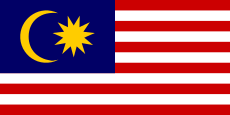 Malaya :
Malaya :
- Grand Commander of the Order of the Defender of the Realm (SMN, 31 August 1958)[7]
-
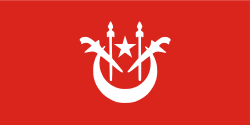 Kelantan (as Sultan 9 July 1960 – 29 March 1979) :
Kelantan (as Sultan 9 July 1960 – 29 March 1979) :
-
 Recipient (21 July 1939) and Grand Master (1960–1979) of the Royal Family Order of Kelantan or "Star of Yunus" (DK)
Recipient (21 July 1939) and Grand Master (1960–1979) of the Royal Family Order of Kelantan or "Star of Yunus" (DK) -
 Knight Grand Commander (SPMK, 9 August 1950) and Grand Master (1960–1979) of the Order of the Crown of Kelantan or "Star of Muhammad"
Knight Grand Commander (SPMK, 9 August 1950) and Grand Master (1960–1979) of the Order of the Crown of Kelantan or "Star of Muhammad" -
 Knight Grand Commander (SJMK, 9 August 1959) and Grand Master (1960–1979) of the Order of the Life of the Crown of Kelantan or "Star of Ismail"
Knight Grand Commander (SJMK, 9 August 1959) and Grand Master (1960–1979) of the Order of the Life of the Crown of Kelantan or "Star of Ismail" -
 Founding Grand Master and Knight Grand Commander of the Order of the Loyalty to the Crown of Kelantan or "Star of Ibrahim" (SPSK, 10 December 1967 – 29 March 1979)
Founding Grand Master and Knight Grand Commander of the Order of the Loyalty to the Crown of Kelantan or "Star of Ibrahim" (SPSK, 10 December 1967 – 29 March 1979) - Grand Master of the Order of the Most Distinguished and Most Valiant Warrior (PYGP, 9 July 1960 – 29 March 1979)
-
-
 Kedah :
Kedah :
-
.svg.png) Member of the Royal Family Order of Kedah (DK, 5 July 1969)
Member of the Royal Family Order of Kedah (DK, 5 July 1969)
-
-
 Pahang :
Pahang :
-
 Member 1st class of the Family Order of the Crown of Indra of Pahang (DK I)
Member 1st class of the Family Order of the Crown of Indra of Pahang (DK I)
-
-
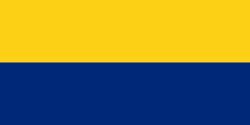 Perlis :
Perlis :
-
 Recipient of the Perlis Family Order of the Gallant Prince Syed Putra Jamalullail (DK, 13 February 1978)
Recipient of the Perlis Family Order of the Gallant Prince Syed Putra Jamalullail (DK, 13 February 1978)
-
-
 Selangor :
Selangor :
-
 First Class of the Royal Family Order of Selangor (DK I, 21 July 1966) [8]
First Class of the Royal Family Order of Selangor (DK I, 21 July 1966) [8]
-
-
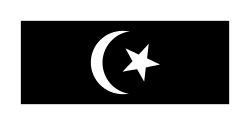 Terengganu :
Terengganu :
-
 Member first class of the Family Order of Terengganu (DK I, 23 June 1964)
Member first class of the Family Order of Terengganu (DK I, 23 June 1964)
-
-
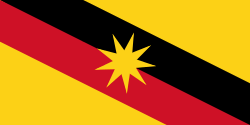 Sarawak :
Sarawak :
-
_-_1._Knight_Grand_Commander_(DP).svg.png) Knight Grand Commander of the Order of the Star of Hornbill Sarawak (DP)
Knight Grand Commander of the Order of the Star of Hornbill Sarawak (DP)
-
Foreign Honours
-
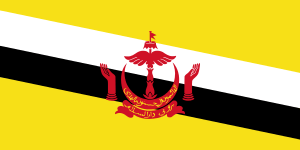 Brunei :
Brunei :
- Dato Laila Utama of the Royal Family Order of Brunei (DK, 1961)
-
 United Kingdom :
United Kingdom :
- Companion of the Order of St Michael and St George (CMG – 1952)
- Knight Grand Cross of the Order of St Michael and St George (GCMG) – 1972
- Queen Elizabeth II Coron Medal (1953)
Trivia
- Sultan Yahya Petra Bridge in Kelantan was named after him.
- Petra Jaya, a suburb in Kuching, Sarawak was named after him.
Notes
- ↑ Finestone, Jeffrey and Shaharil Talib (1994) The Royal Families of South-East Asia Shahindera Sdn Bhd
- ↑ Risalah Pertabalan Yang di-Pertuan Agong VI Jabatan Penerangan Malaysia
- ↑ (19 November 2005) Harakah
- ↑ Tunku Abdul Rahman (1978) Viewpoints p 74 Heinemann, Kuala Lumpur
- ↑ (1 April 1979) New Straits Times
- ↑ Finestone, Jeffrey and Shaharil Talib (1994) Op Cit
- ↑ "Senarai Penuh Penerima Darjah Kebesaran, Bintang dan Pingat Persekutuan Tahun 1958." (PDF).
- ↑ List of recipients of DK I & DK II of Selangor (in Malay)
| Regnal titles | ||
|---|---|---|
| Preceded by Tuanku Abdul Halim (Sultan of Kedah) |
Yang di-Pertuan Agong (King of Malaysia) 1975–1979 |
Succeeded by Sultan Ahmad Shah (Sultan of Pahang) |
| Preceded by Ibrahim IV of Kelantan |
Sultan of Kelantan 1960–1979 |
Succeeded by Ismail II Petra of Kelantan |